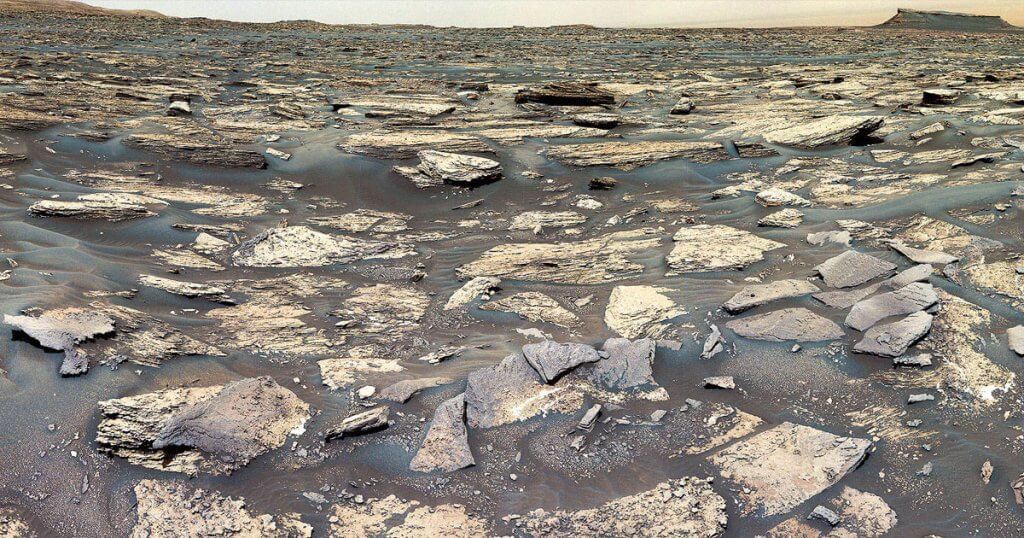
Mars Loaded With Mineral Closely Associated With Life, NASA Rover Finds (Image Credit: futurism-com)
“It’s remarkable to find such recognizable features on ancient Mars.”
Oxidation Fascination
NASA’s Curiosity Mars rover has discovered rocky material that’s riddled with an unusual amount of manganese, a mineral that’s abundant in lakes found back on Earth and closely associated with microbial life.
It’s yet another piece of a much larger puzzle, increasingly suggesting that Mars’ Gale Crater, which scientists suspect to be an ancient lake bed, was teeming with life billions of years ago.
“On Earth, these types of deposits happen all the time because of the high oxygen in our atmosphere produced by photosynthetic life, and from microbes that help catalyze those manganese oxidation reactions,” said Patrick Gasda, Los Alamos National Laboratory researcher and lead author of a new study published in the Journal of Geophysical Research: Planets, in a statement.
The researcher, however, was careful not to jump to any conclusions.
“On Mars, we don’t have evidence for life, and the mechanism to produce oxygen in Mars’s ancient atmosphere is unclear, so how the manganese oxide was formed and concentrated here is really puzzling,” he added. “These findings point to larger processes occurring in the Martian atmosphere or surface water and shows that more work needs to be done to understand oxidation on Mars.”
Rocking On
Gasda and his colleagues analyzed data obtained by Curiosity’s ChecmCam, a laser that blasts rock surfaces to form plasma. By analyzing the light emanating from this plasma, researchers can deduce the rocks’ elemental composition.
The rover has been passing through an area of sand and porous rock that scientists suggest could’ve let groundwater through. This movement could account for the geological processes that allow the formation of the detected manganese.
On Earth, the mineral becomes enriched thanks to the presence of oxygen, a process that can be accelerated by microbial life, which harvests the produced energy for its metabolism.
Could the existence of manganese spotted by Curiosity be evidence of ancient microbial life on the Red Planet? Did the mineral provide these microbes a much-needed source of energy?
“The Gale Lake environment, as revealed by these ancient rocks, gives us a window into a habitable environment that looks surprisingly similar to places on Earth today,” said ChemCam principal investigator Nina Lanza, noting that “it’s remarkable to find such recognizable features on ancient Mars.”
More on Curiosity: NASA Ponders Why Gas Produced by Life Is Leaking Out of Mars at Night
Share This Article





